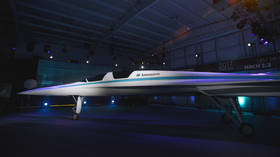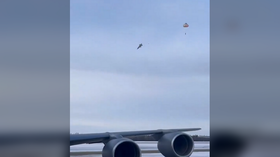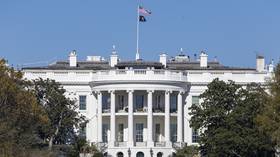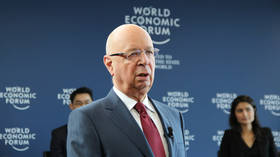Prototype jet breaches sound barrier in historic flight

A test aircraft built by a US start-up has broken the sound barrier for the first time during a flight over California’s Mojave Desert, ushering in what its creators claim could be a new era of air travel.
Boom Supersonic’s XB-1 jet became the first privately developed aircraft to reach Mach 1.1 (approximately 770mph or 1,240kph) on Tuesday.
The aircraft, flown by chief test pilot Tristan ‘Geppetto’ Brandenburg, achieved supersonic speeds three times during the flight. Blake Scholl, founder and CEO of Boom Supersonic, called the event “a big day for all of us, for America, for aviation, and for human progress.”
“XB-1’s supersonic flight demonstrates that the technology for passenger supersonic flight has arrived,” Boom stated. “A small band of talented and dedicated engineers has accomplished what previously took governments and billions of dollars,” Scholl added.
The test flight occurred in the same airspace where, in 1947, US Air Force Captain Chuck Yeager became the first person to break the sound barrier, flying the experimental Bell X-1 aircraft at Mach 1.05 at an altitude of 45,000 feet.
The achievement is seen as a major step toward the development of Boom’s commercial passenger aircraft, the Overture. Designed to carry up to 80 passengers, it is expected to fly at twice the speed of today’s subsonic airliners, according to Boom.
Boom Supersonic has already secured 130 orders for the Overture from major airlines, including American Airlines, United Airlines, and Japan Airlines.
The Overture is poised to be the first large commercial aircraft designed for net-zero carbon emissions, operating on 100% sustainable aviation fuel (SAF). Despite this advancement, supersonic planes like the Overture face challenges such as high fuel consumption and sonic booms, which limit their ability to reach supersonic speeds over populated areas.
The XB-1’s milestone marks the first time a civil aircraft has gone supersonic over the continental United States since the Concorde’s retirement.
The Concorde was a groundbreaking supersonic passenger airliner developed jointly by Britain and France. It made its first flight on March 2, 1969, and entered commercial service in 1976.
Capable of cruising at over twice the speed of sound (Mach 2.04) at altitudes up to 60,000 feet, it significantly reduced transatlantic travel times, flying from London to New York in about three hours. However, due to high operational costs, low passenger numbers, and a fatal accident in 2000, the Concorde was retired in 2003.














